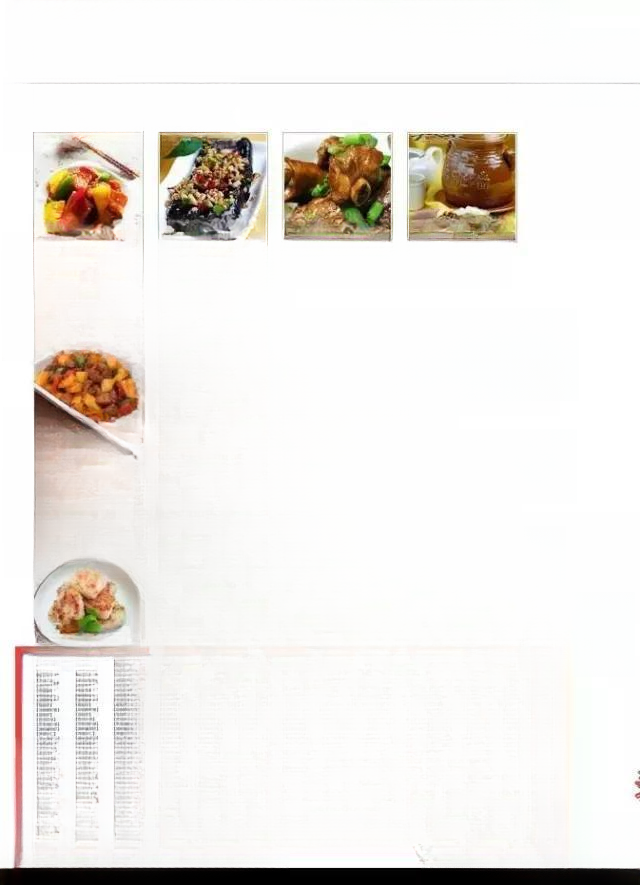Italian chef teaches you how to roll out pasta: the key points of authentic allpurpose pasta with sauce from abroad
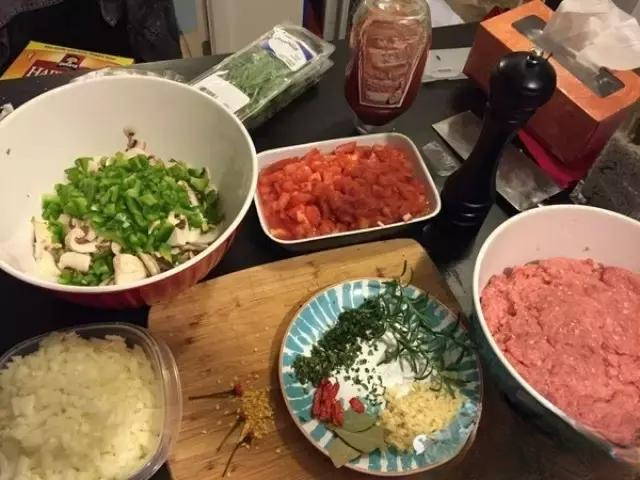
You've never really eaten pasta properly. An Italian chef named Giancano taught me how to make Bolognese sauce.
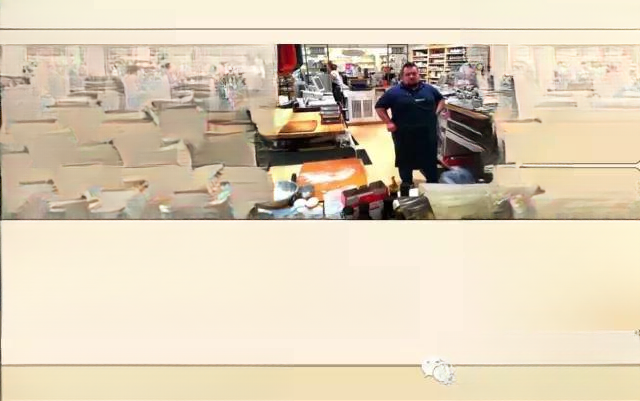
Italian pasta, also known as spaghetti, is the most similar to people's eating habits and the most easily accepted among Western food varieties. Fortunately, I have eaten it in a restaurant.
I think pasta is just an ingredient; it just needs to be delicious. You can use Chinese sauces or "traditional" sauces. However, these "traditional" sauces themselves are different, and you can mix and match them as you like.
A versatile meat sauce for homemade pasta—absolutely amazing! I made it myself, low in oil and fat, and it tastes great too! Thanks! Save it! It's also incredibly delicious with rice or steak! Not authentic Italian.
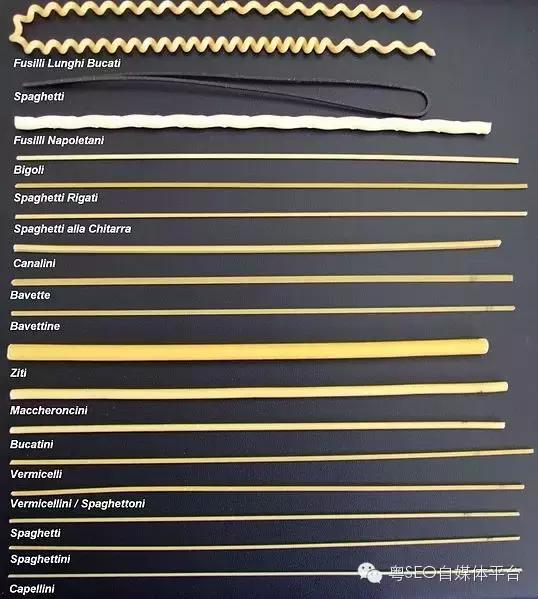
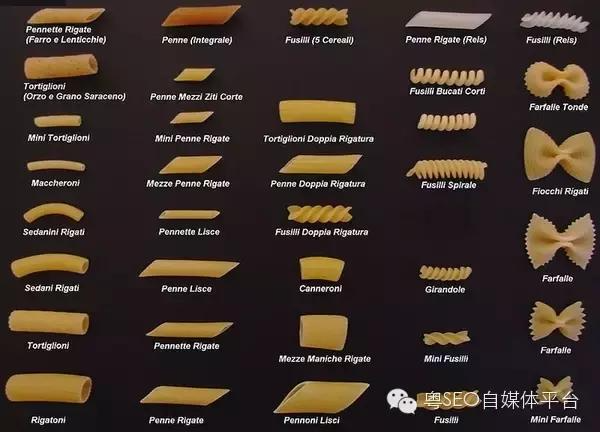
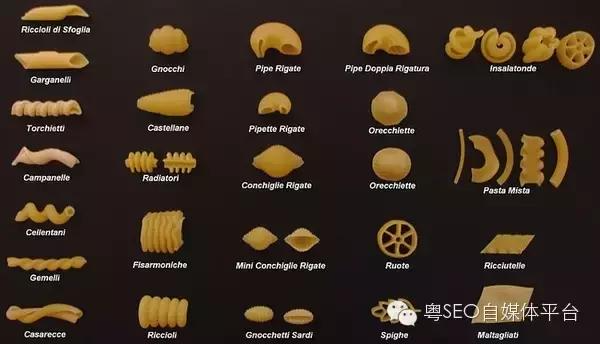
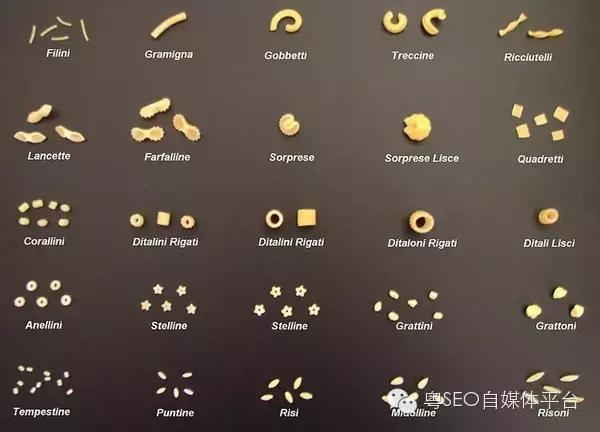
Prepare the main ingredient, pasta. Note: Pasta comes in many different shapes. The picture above is the most common recipe book for Italian restaurants.
When talking about how to cook noodles and how to make simple sauces, you should at least start by kneading the dough.
Let's get back to the beginning: how to make pasta itself. Pasta is made from semolina flour, a type of flour ground from durum wheat. The English word for this type of pasta began to be called pasta in the 19th century, a reference to the Italian word for pasta. The history of this type of pasta is very ancient, with prototypes appearing as early as the 1st century BC (during the Han Dynasty and Rome)—though some say it dates back to the 7th century BC (during the Spring and Autumn Period), when the fork for eating pasta was invented. Durum wheat is characterized by its firmness and high protein content. The resulting noodles remain chewy and durable, making them ideal for making cold noodles. Seriously!
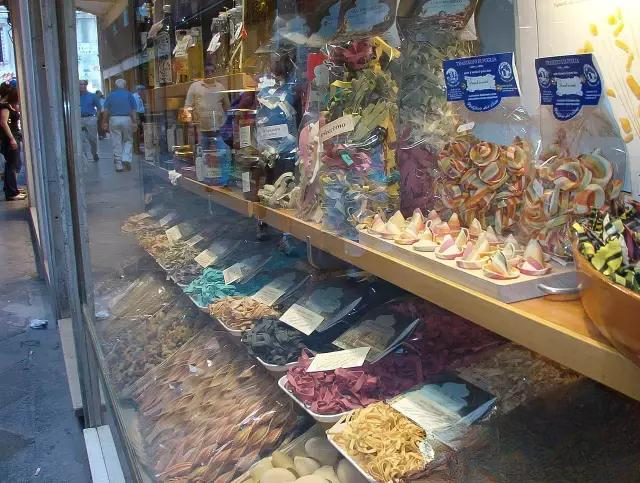
Pasta dough: (used to make macaroni, spaghetti, etc.), Italian pasta)
Authentic homemade pasta eaten at home should be made by a real Italian. Here's a guy who demonstrates it. He's a free cooking instructor for a famous chain restaurant. Once a week, he teaches everything: last week, he taught how to cook with wine, and the week before that, he taught pizza.
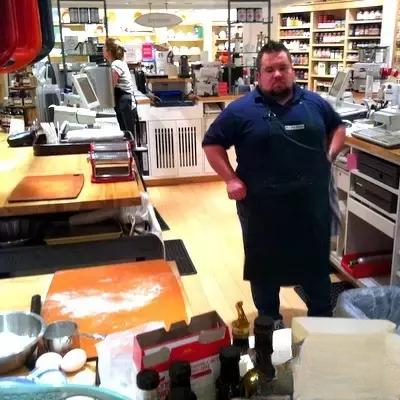
This time we will demonstrate how to make classic egg pasta: Bolognese pasta
【Ingredients for pasta/flour recipe】
2 1/2 cups all-purpose flour
1 cup Semolina flour
1 teaspoon salt
1 tablespoon olive oil
4 eggs
2 tablespoons water (the amount depends on the type and brand of flour)
[This is how to make pasta/powder]
First pile the flour, leaving a hole in the middle, beat in the eggs, add salt, oil and water.
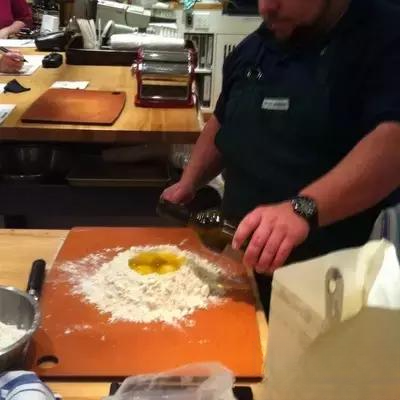
Beat the eggs with a fork or whisk until smooth.
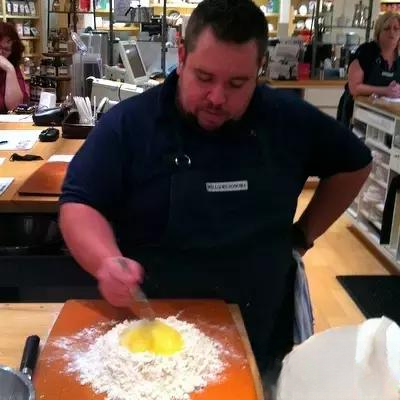
This process requires boldness and carefulness, because the flour is loose and it is easy to cause a dam burst. The guy specially demonstrated how to play it out... Beginners are advised to use a separate bowl.

When kneading the dough, ladies, remember to lay the eight-hearts and eight-arrows pigeon eggs on your hands.

It is recommended to set the dough aside to rest for a while, about 20 minutes to 2 hours. Then cut it into portions according to your appetite.
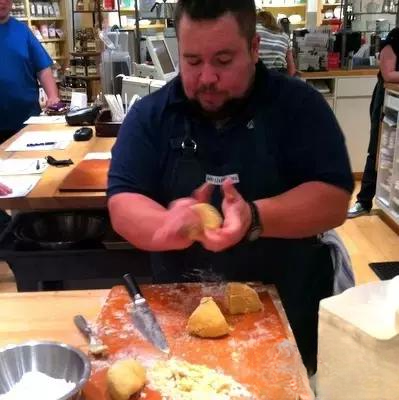
Using machinery is also a tradition. This hand-cranked noodle pressing machine is also sold in China. The dough is flattened before being put into the machine, which presses the dough sheets first and then the noodles.

But the guy messed up again because he didn’t sprinkle enough dry flour on the roller before putting the dough in, so the dough stuck, so he picked up his expensive Japanese Shun knife and poked and poked!!!

Then let's use a rolling pin. The thickness is optional, and it determines the thickness of the noodles you eat later. It reminds me of Lanzhou ramen, which has three types: thin, thin, and thin. After all, it is an authentic Italian product. Even if the machine is not powerful, the basic skills of the hands are still there.
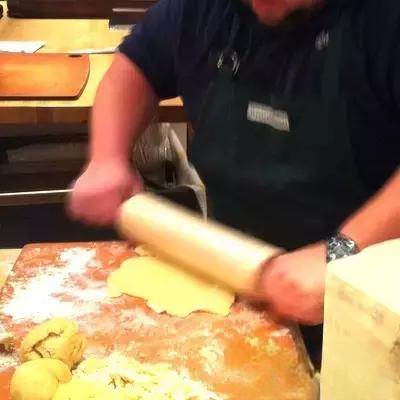
Roll up the dough and cut it with a knife. This is very similar to the operation of cutting noodles. It is true that Tianxia Noodles is from the same family.
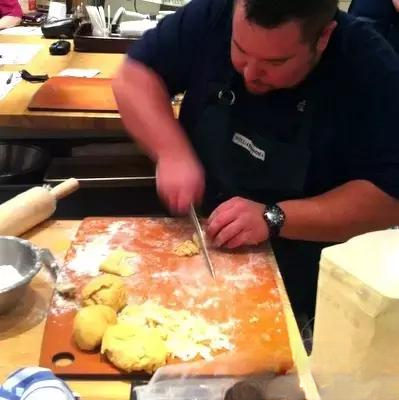
This is the finished product. It is considered as the second widest ramen? But you can eat it at home as you like.

The unique quality of Giancano's flour allows for unique shapes, which require the use of molds. The dough is formed into small balls and fed into an extruder. Depending on the size of the mold holes, a variety of hollow pastas emerge.
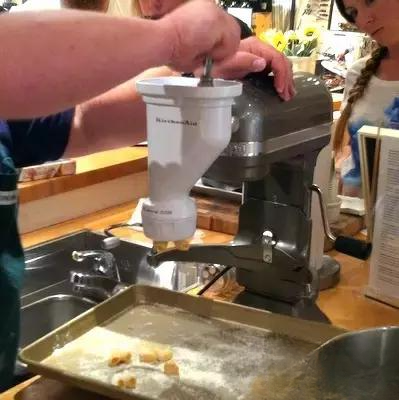
Cooking the noodles is key to Giancano's success. Choose a tall, deep pot to help the long noodles unfold. First, boil water and add salt (try the ratio; a teaspoon is enough for a light dish). Next,
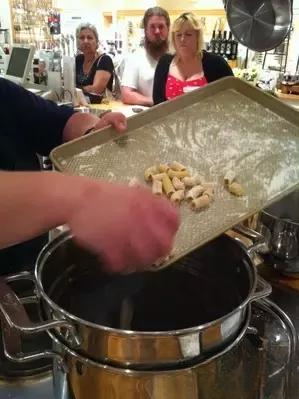
When is the noodle ready? Traditionally, it's considered soft enough to stick to the ceiling when you throw it, but it shouldn't be too soft. It's best if there are some fine white spots inside to show off the texture. If you prefer it soft, that's fine too. These noodles rarely get mushy when cooked, so if they do, you can just drink them as soup.
You can use a funnel to scoop out the noodles or you can directly use the matching colander pot.
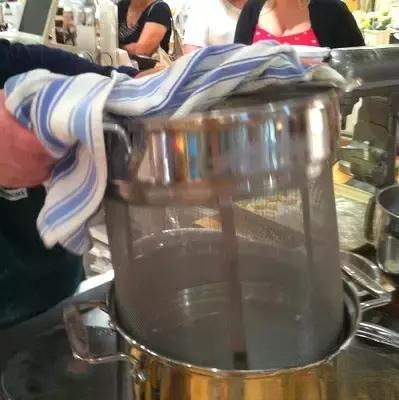
There are also techniques for making pulled noodles, but they are definitely not as delicious as my Lanzhou pulled noodles. There are also techniques for making wontons and dumplings. Looking at the techniques, there is only one word: clumsy! They even use tools to press the edges. How lame!

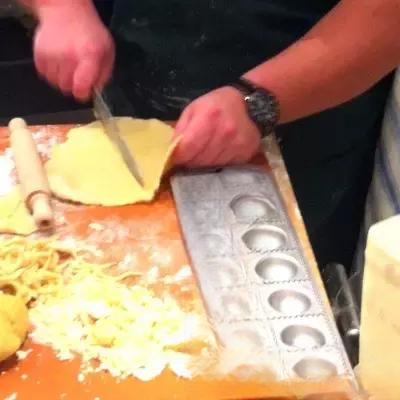
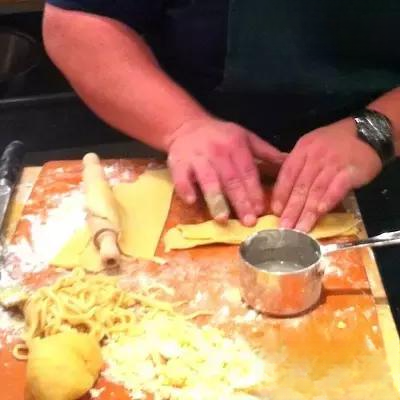
There are many more tricks to this. For a simple home-cooked dish, just add olive oil, pepper, and other seasonings and mix them together.
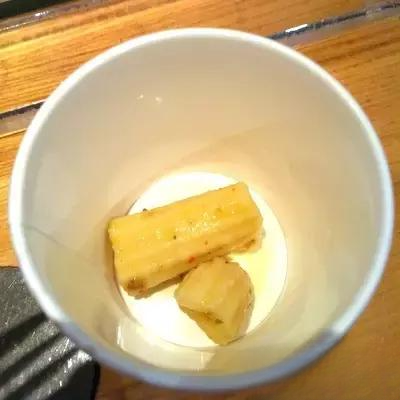
The key to making pasta is the meat sauce. Once the meat sauce is ready, store it and simply stir-fry it after cooking the pasta. It tastes amazing! Simple and delicious!
[Picture of the finished product of authentic Italian all-purpose meat sauce]
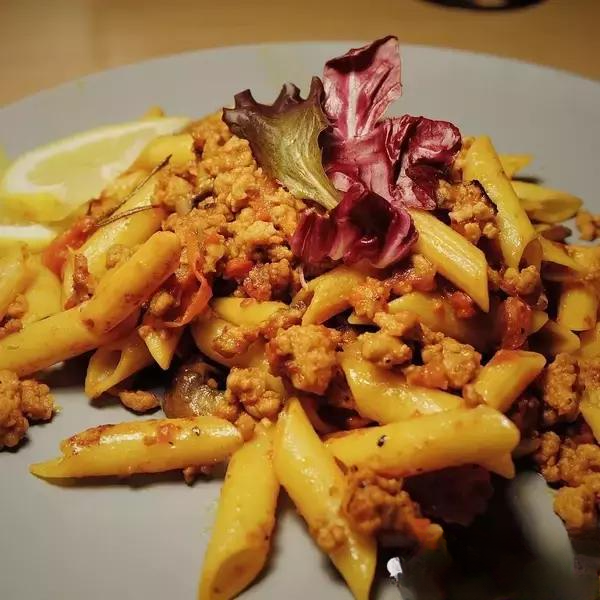
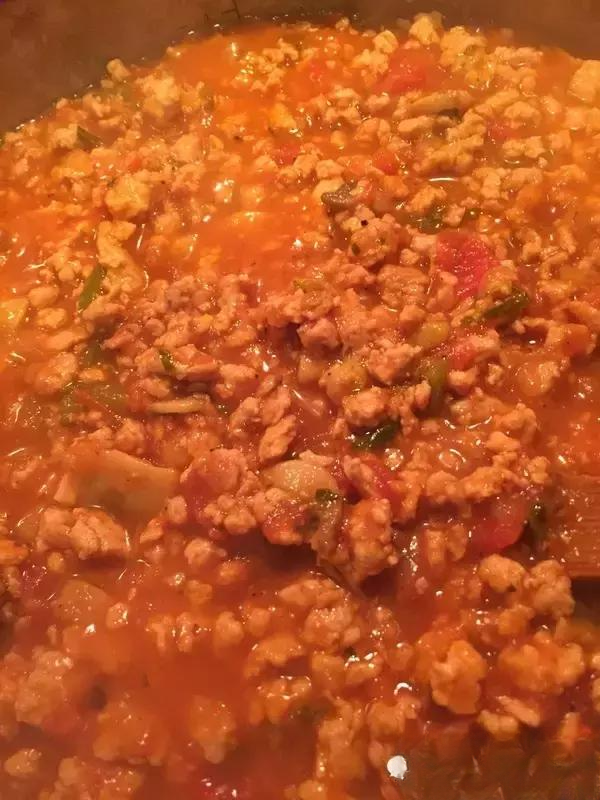
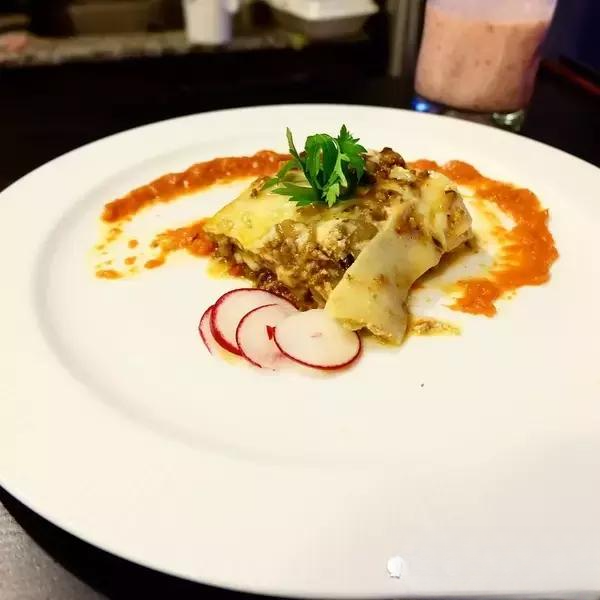
【Ingredients for authentic Italian all-purpose meat sauce noodles/powder 】
The meat is the key to the sauce, so don't hesitate to choose the best ground meat you can find. Veal has a bright red color, while pork has a fattier, more fragrant flavor. A blend of the two is recommended. I chose pure pork ground meat today. Add salt and pepper, rub well, and let it sit for half an hour before preparing the remaining ingredients.
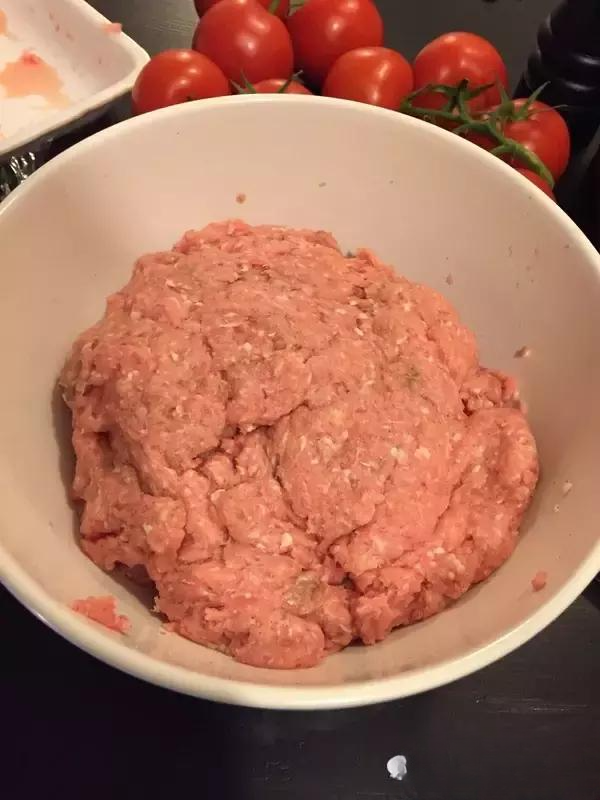
tomato
You need three tomato products: fresh tomatoes, canned crushed tomatoes (unseasoned), and tomato paste (not ketchup).
Chop the tomatoes and set aside with the juice.
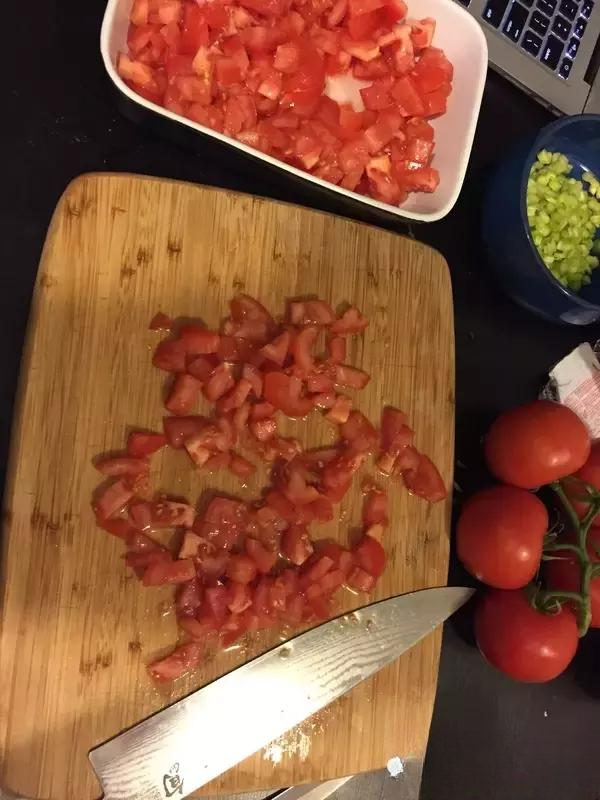
Fresh tomato flavor alone isn't enough; canned crushed tomatoes add a nice flavor boost, and the juice from the can is much better than just adding water. Tomato paste helps thicken the meat sauce, so it won't be too watery. If you can't find it, you can use tomato paste instead (I ran out of paste today and used tomato paste instead).
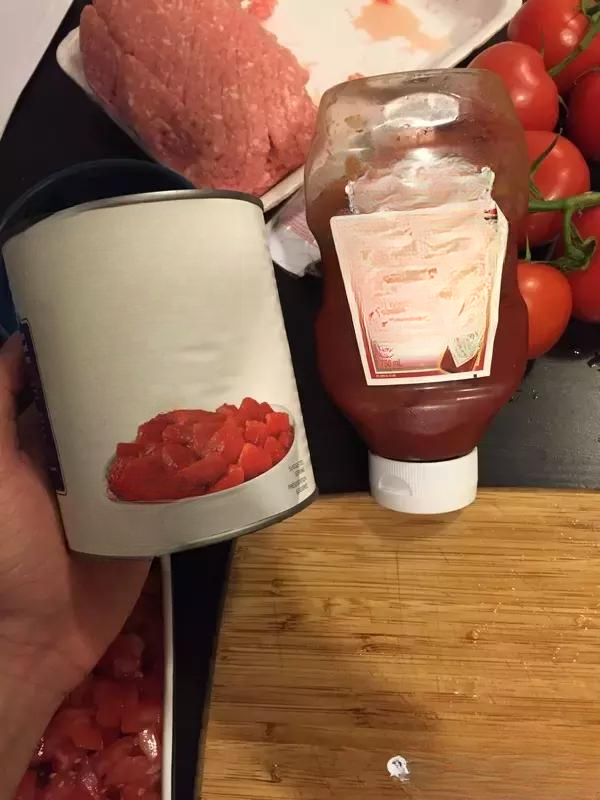
Just mix the three things.
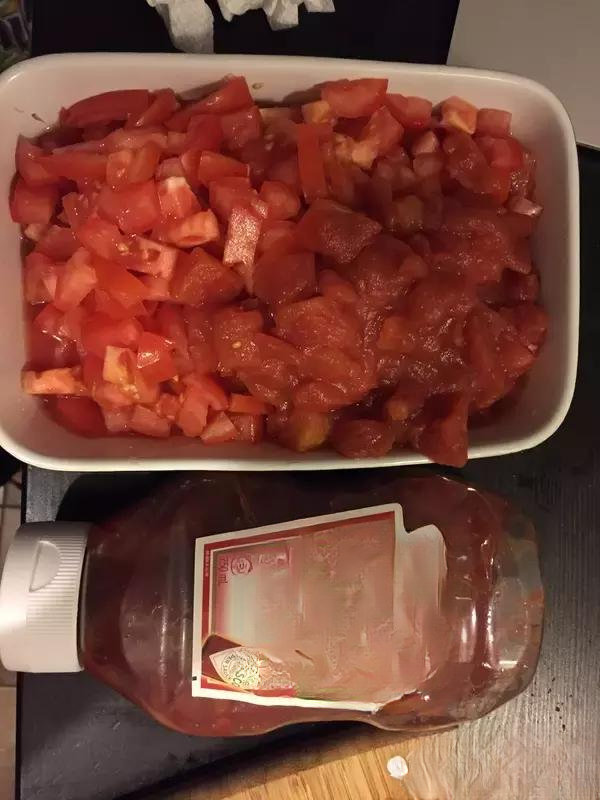
vegetable
Green peppers, mushrooms and onions, a must!
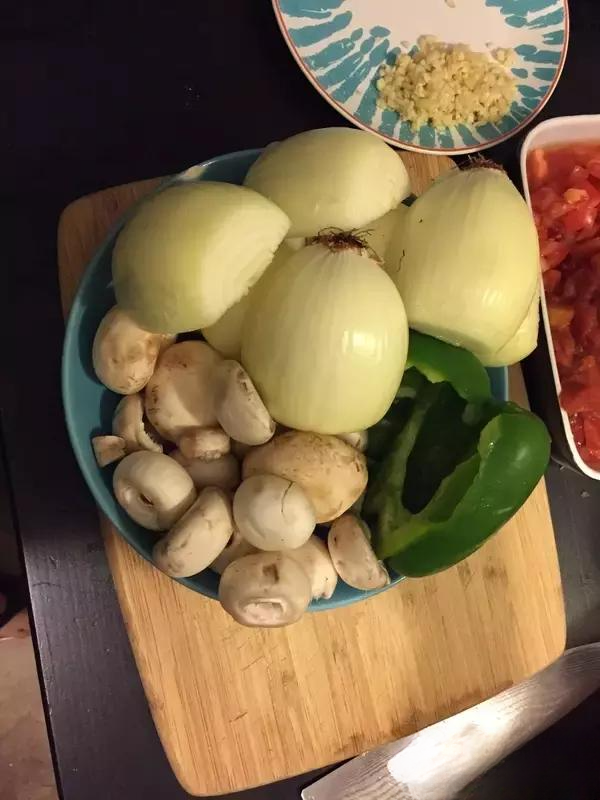
Remove the roots and slice the mushrooms. Do not use shiitake mushrooms, king oyster mushrooms, or enoki mushrooms...just use the most common white mushrooms.
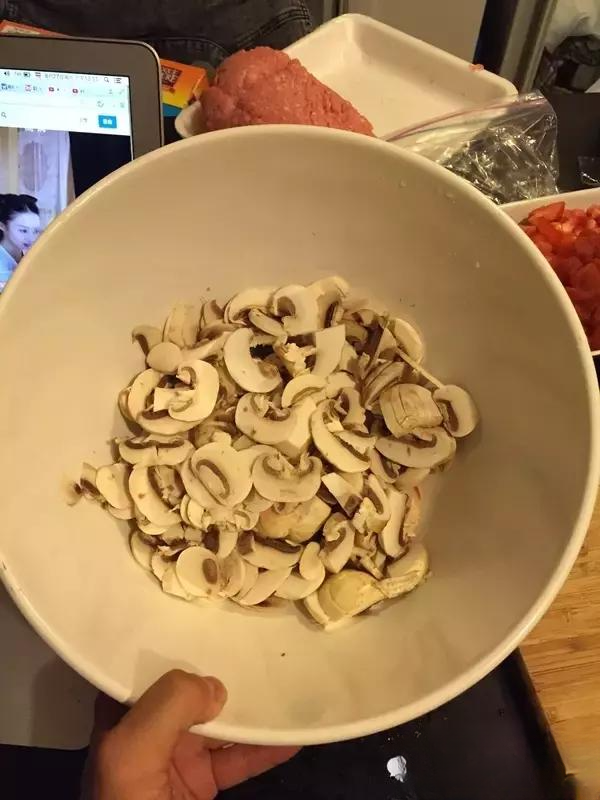
Deseed the bell pepper and dice it into pieces slightly larger than the onion.
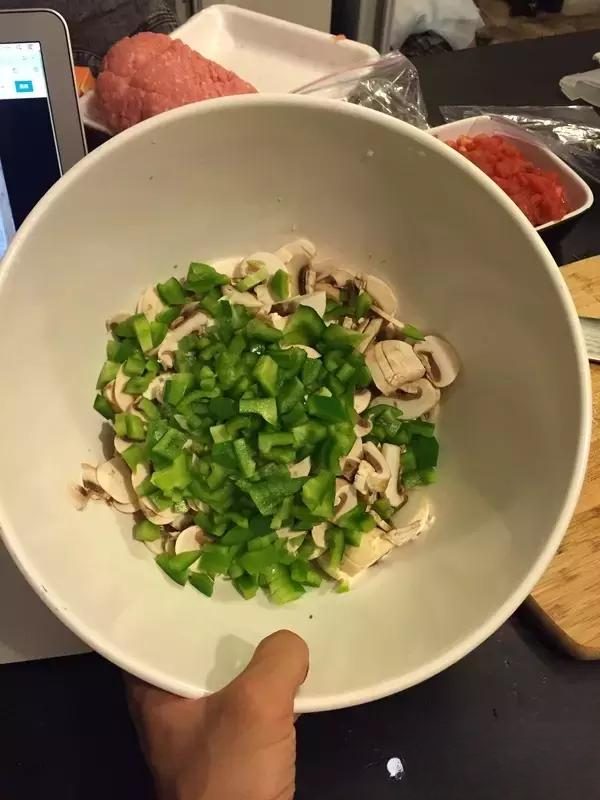
Chop the onion into small pieces to enhance the flavor at the beginning. You don’t want to eat onions in the meat sauce, so they don’t need to be very big.
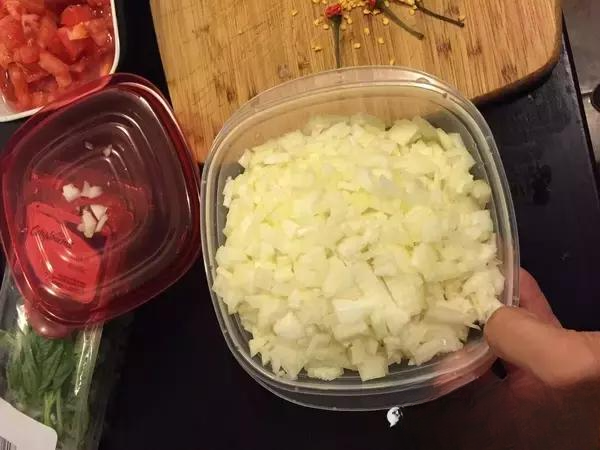
Asparagus. Not essential, but proven to make the sauce less oily and more crispy, it's highly recommended. Preparation: Asparagus has a natural break point; break off the base and discard, then peel. The skin can be tough and bitter, so peeling it is highly recommended.
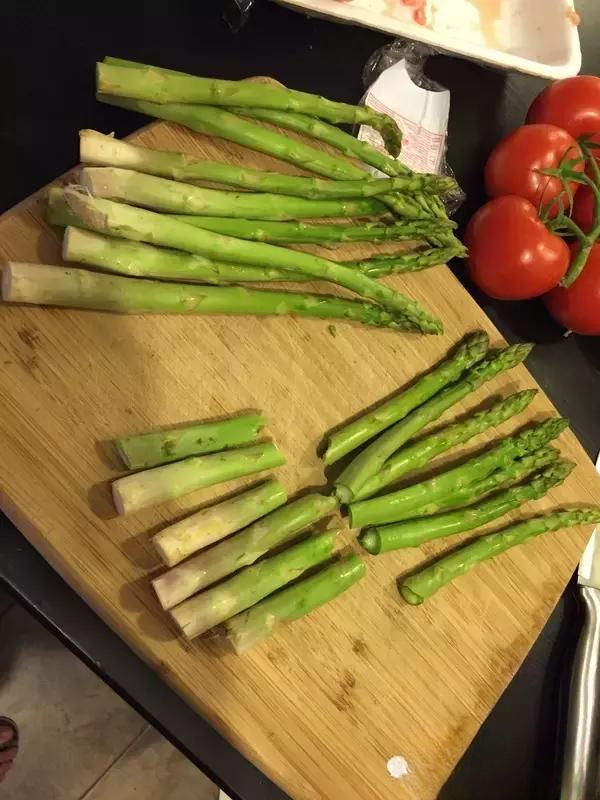
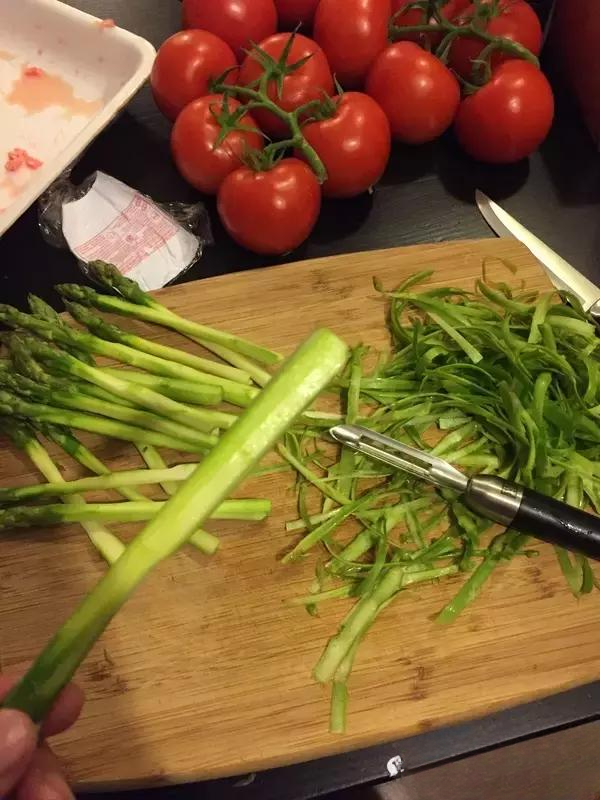
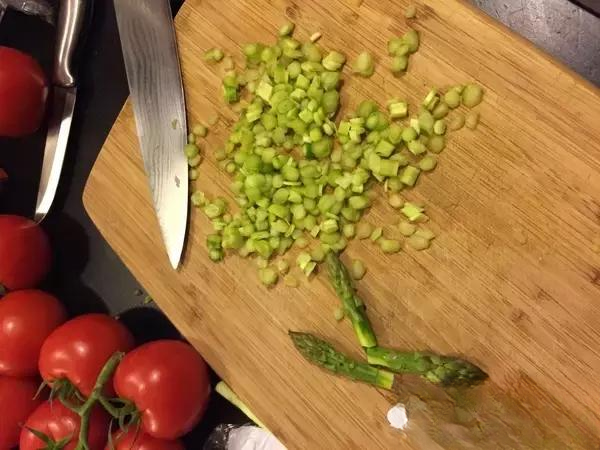
spices
Chop the garlic into fine pieces.

Three spices: minced oregano, minced basil (essential), whole rosemary (essential)
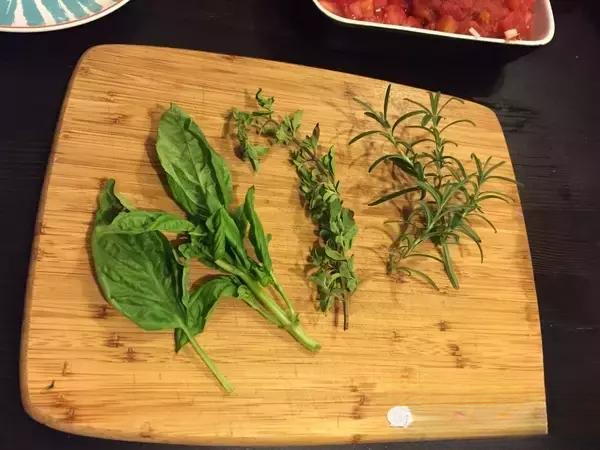
A few whole bay leaves, dried chilies (seeded), and ground black pepper (be careful not to use ground pepper; it's best to buy granulated peppercorns and grind them).
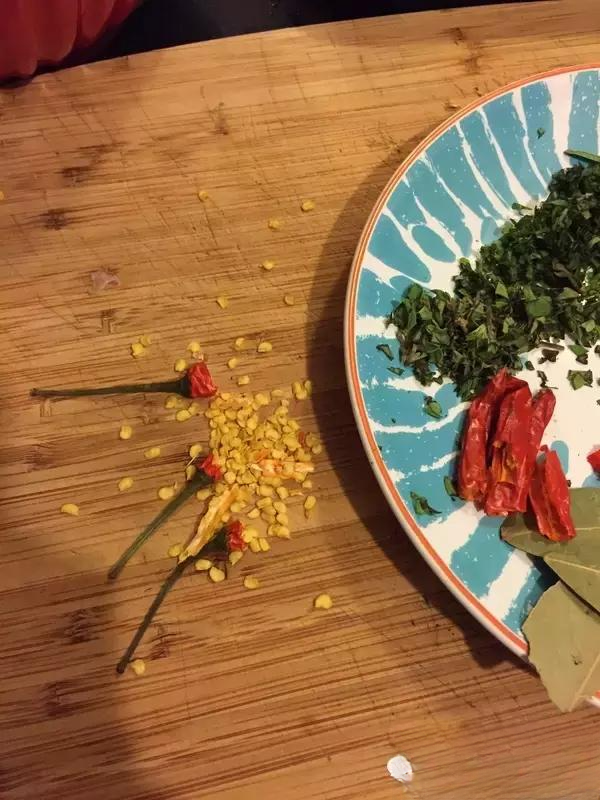
You are now ready to go!
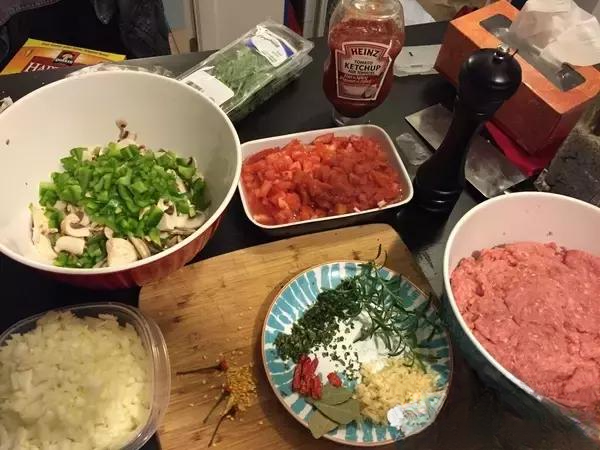
[ How to make authentic Italian all-purpose meat sauce noodles/powder ]
Open fire
Heat the pan with olive oil or vegetable oil. Do not use animal oil (which will be greasy) or peanut oil (which has a strong smell).
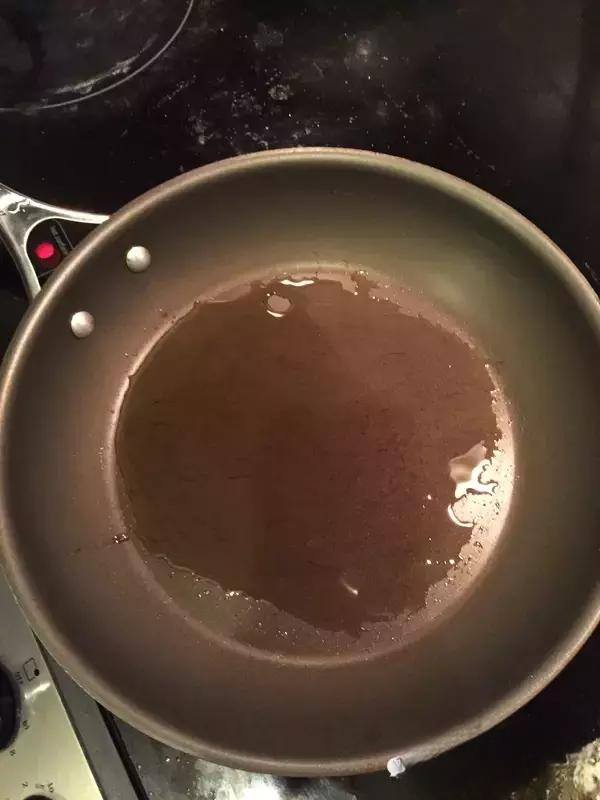
First add the minced meat and fry over high heat until golden brown, then spread the minced meat. This is different from the usual stir-frying. The purpose of adding the minced meat is to quickly fry the surface of the meat until golden brown and lock in the moisture. Because the minced meat will be stewed for a while later, there is no need to worry about the flavor of onions and other vegetables not being released.
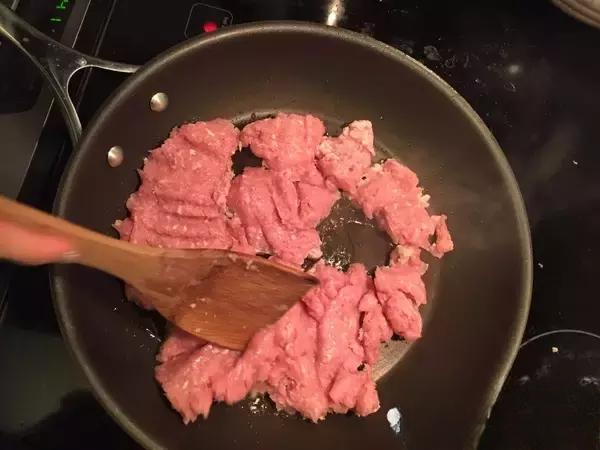
Add minced garlic, onion, mushrooms and green peppers.
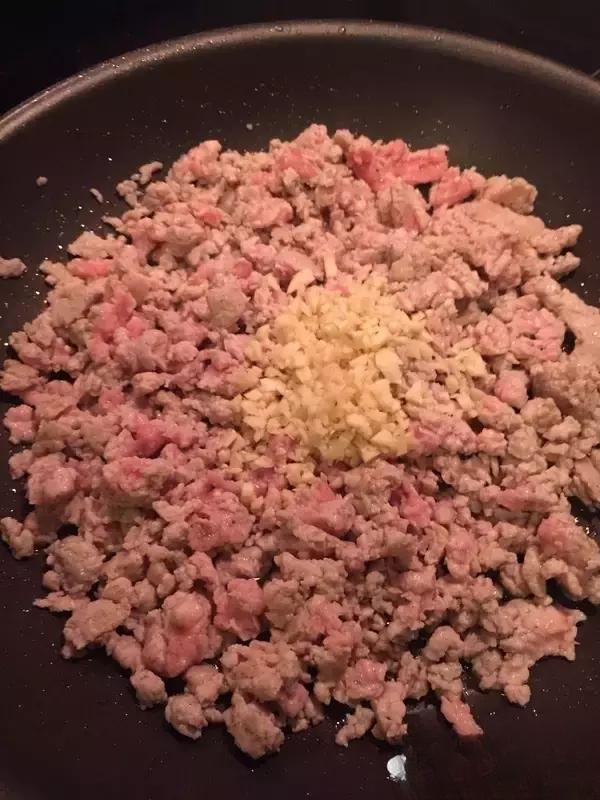
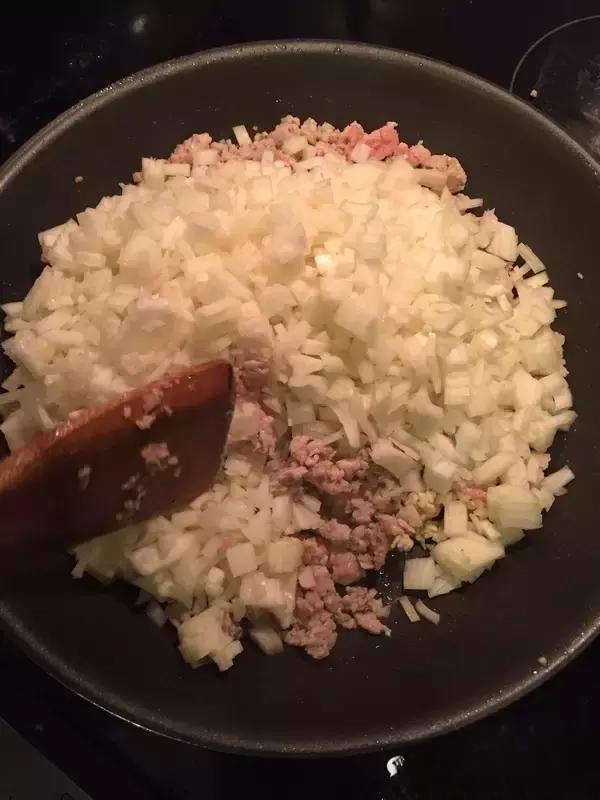
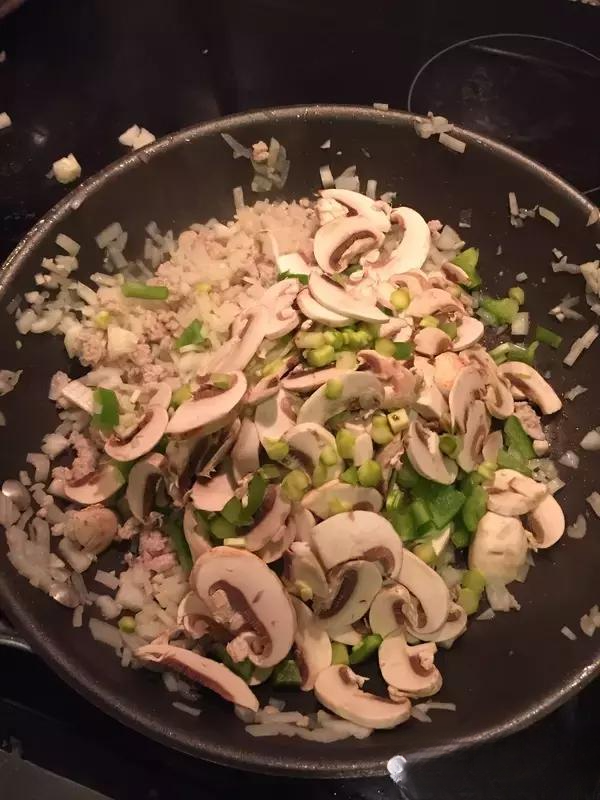
When the onions are slightly browned, add the chopped tomatoes and tomato paste. Bring to a boil over high heat.

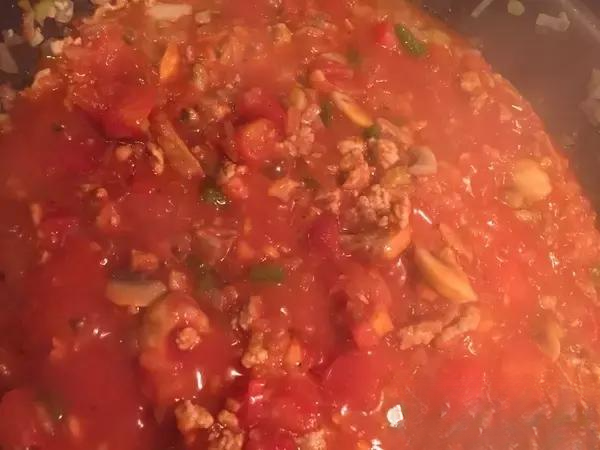
After turning on the heat, add chicken or beef broth, or a little canned tomato juice, and then replace the heat with warm water. Avoid adding cold water!
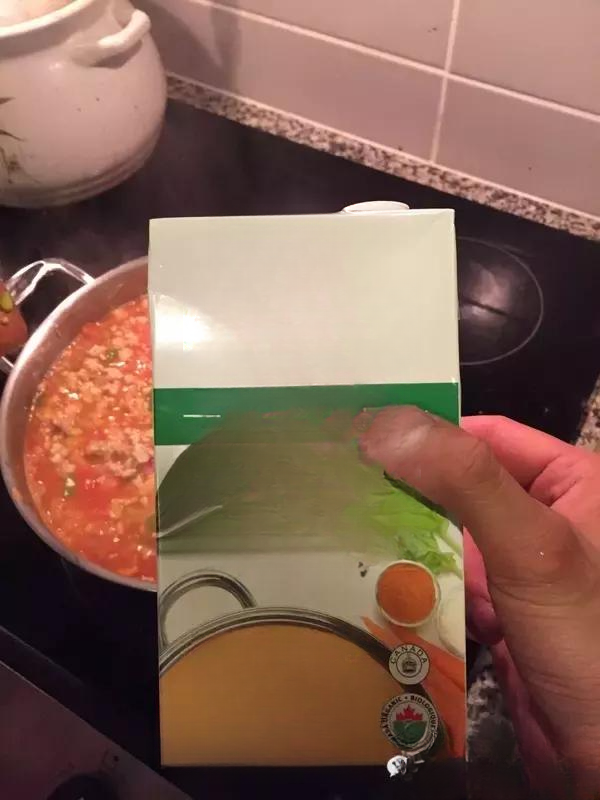
Once the sauce starts to bubble, add the spices. We'll remove the bay leaves and thyme once the meat sauce is almost done, so be careful not to crush them. If you're worried about finding what you're looking for, place them in a spice bag for easy removal.
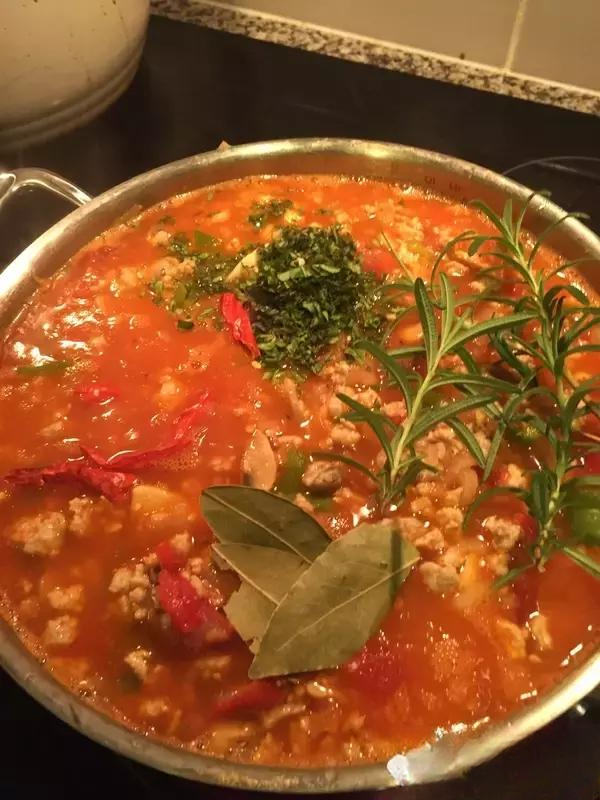
Turn to low heat, cover and simmer for more than half an hour.
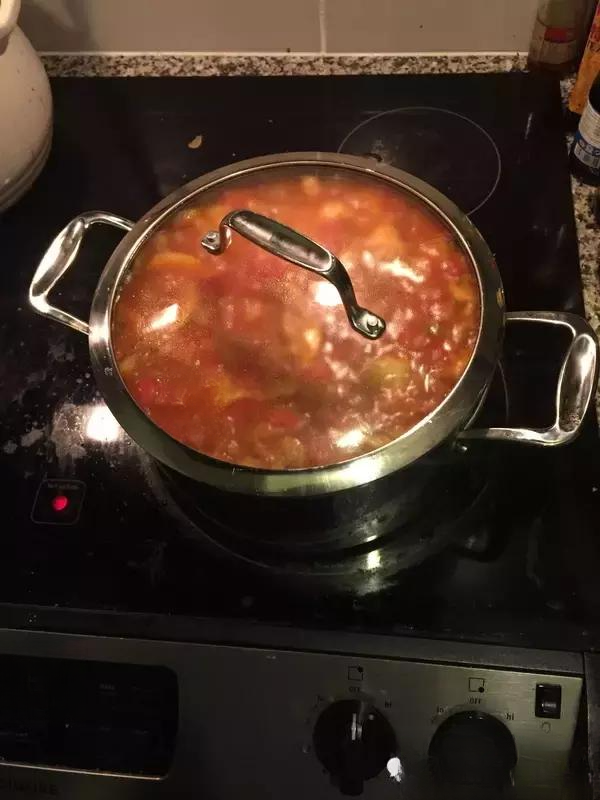
Make sure the water in the pot is just enough to cover the meat. After closing the lid, there is no need to frequently flip the lid to stir the pot to allow the water to absorb slowly.
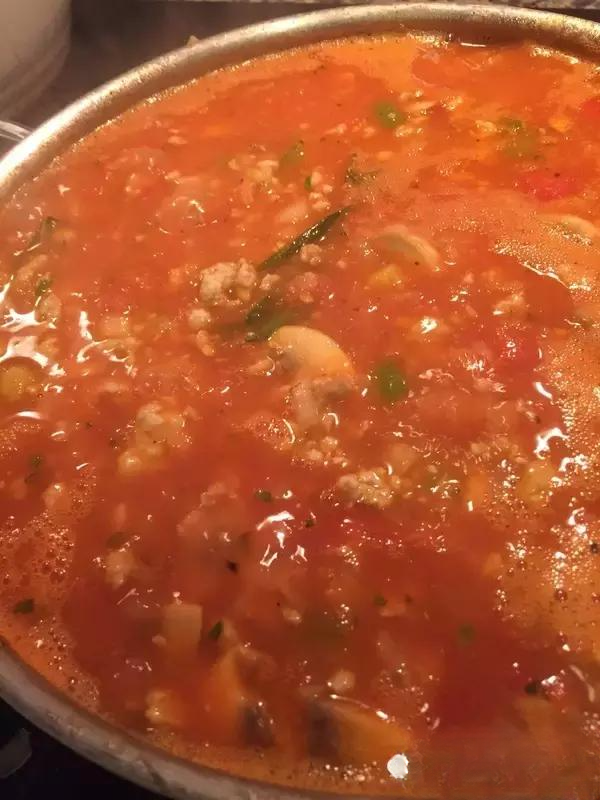
After half an hour, it's ready to serve! Xiaoxin removes the rosemary and bay leaves. Season to taste with salt and pepper. Because enough tomatoes and tomato paste have been added, the meat sauce should already be red enough (even better with beef), so adding red wine or other coloring products isn't necessary. The finished product is as shown in the picture!


After that, you can put the meat sauce rice in a sealed container and freeze or refrigerate it for later use. The owner made a large pot of meat sauce this time and it is estimated that it can be eaten for about a month, so I kept some soup in the pot for the next use. Pay attention to the soup and meat sauce.
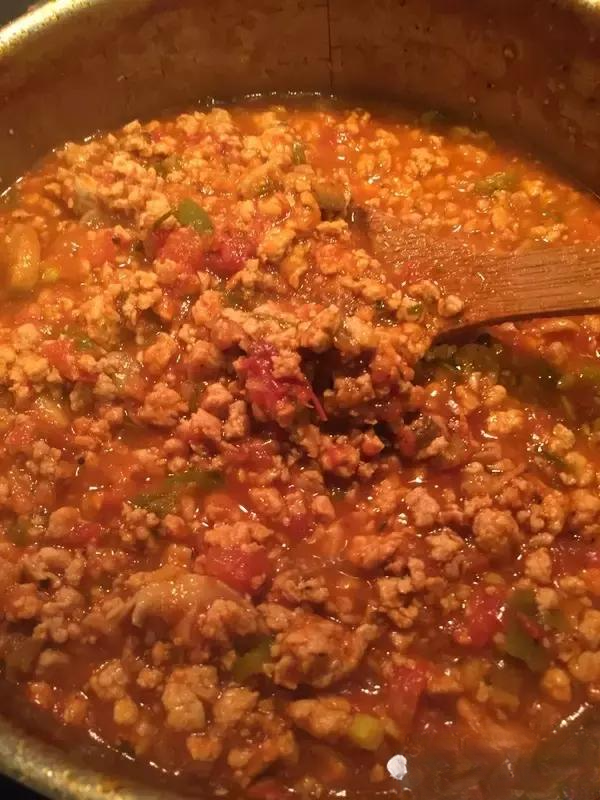
After cooling, store the meat sauce in an airtight container. It can be frozen or refrigerated. I made a large pot of meat sauce this time, which I estimate will last for about a month, so I left some liquid in the pot to prevent it from drying out next time. If you're only making a single batch, you won't need to leave so much liquid.
[Next, I will introduce several other ways to eat meat sauce! ]
1. Tomato main ingredient (red sauce)
1. Fresh Tomato Pasta Sauce
The most traditional pasta sauce, with a sweet and sour taste. You can add sautéed green onions to enhance the flavor.
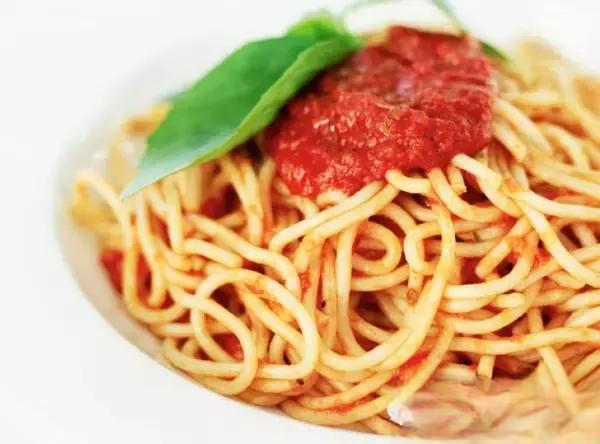
2. Bolognese
Originating in Bologna, Italy, this sauce is made with meat and tomatoes, and is often served with pasta. Its signature dish is onion, garlic, celery, carrot, and cinnamon.
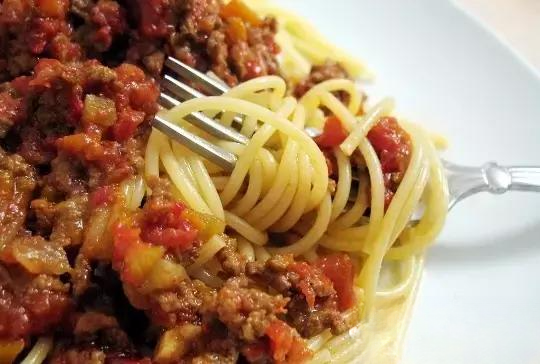
3. Bacon and Tomato Sauce (Amatriciana)
Bacon and onion are fried in olive oil, tomato and paprika and topped with Pecorino cheese, which has a rich flavor.
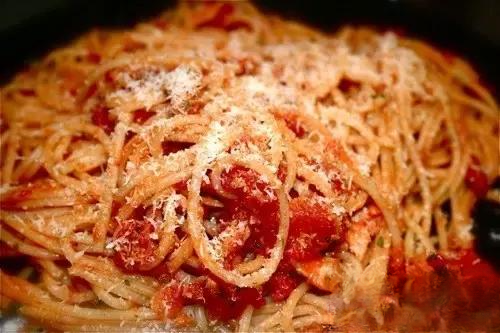
4. Arrabbiata (How do you translate this...chili sauce?)
This sauce is made with red peppers, garlic, and tomatoes. I personally like spicy food, so I'd give it a try. This sauce is usually served with penne.
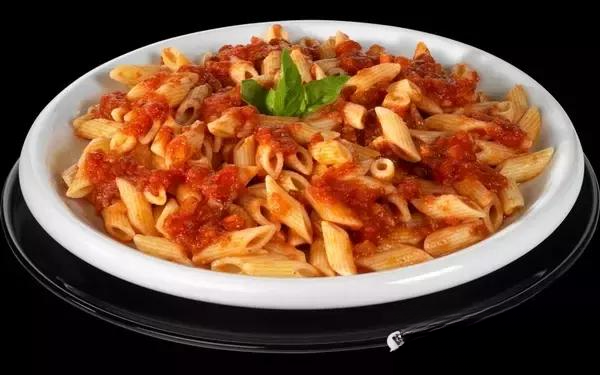
5. American chop suey
A common pasta sauce in the US, or more accurately, a common pasta dish in the US. Sorry, I haven't tried this, but I'll wait for an expert to correct me. It's also a beef-based tomato-based dish with macaroni.
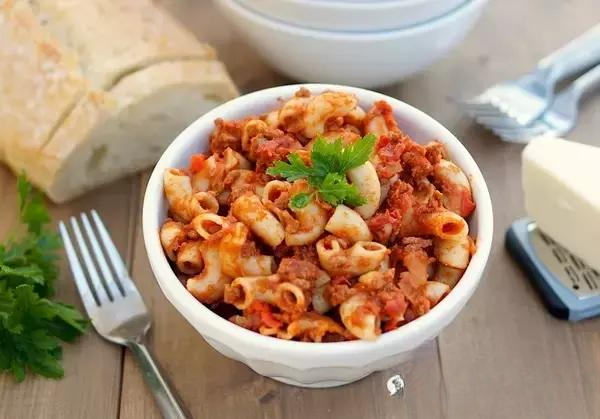
6. Salsa
Well, I never thought of adding this to pasta. At most, I would eat it with corn chips or Burrito.... But a friend reminded me that there seems to be a way to eat Bigoli in Salsa in Venice, so I might as well put it in. I am a little bit not used to the slightly spicy sauce.
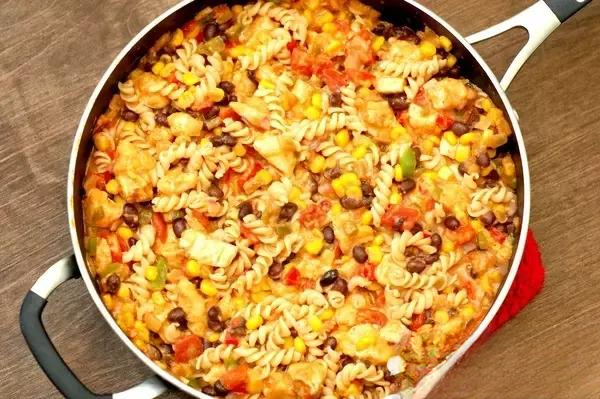
7. Lasagna
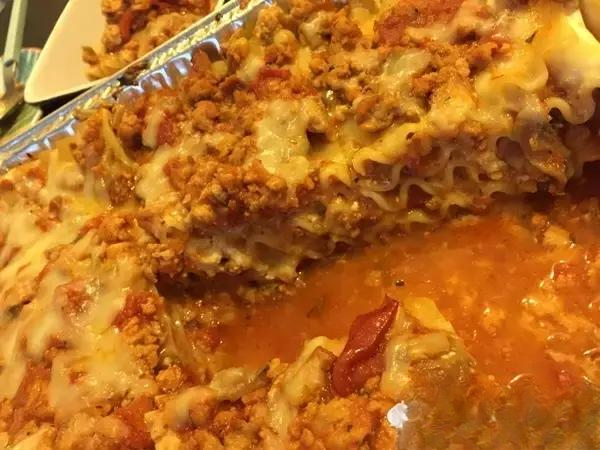
8. Eggplant Rice Bowl
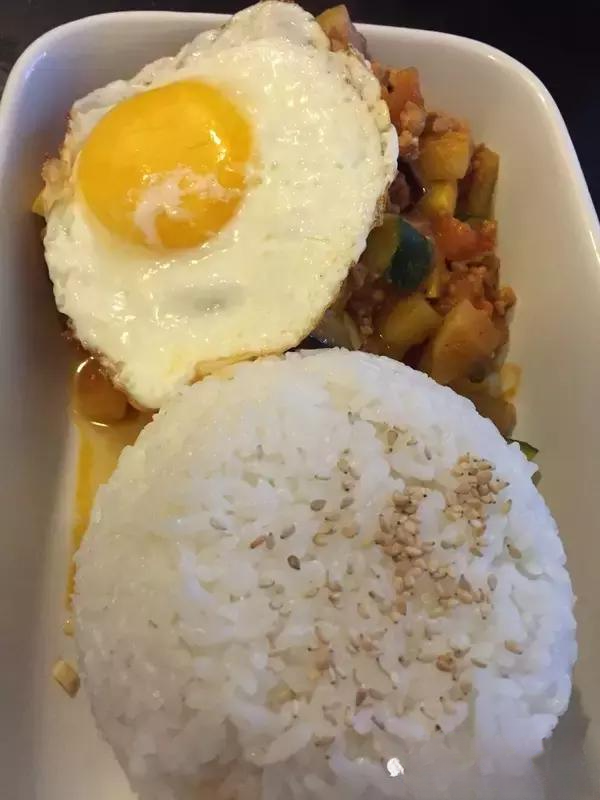
9. And the simplest pasta!
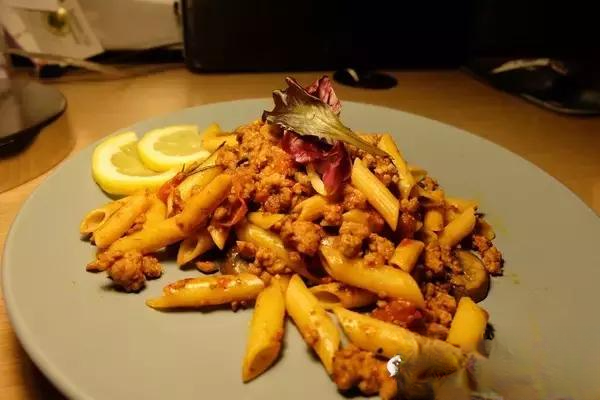
[Cantonese recipes issue 17 tips]
In addition, the sauce used for pasta is also quite important. Generally speaking, there are four types of pasta sauce: red sauce, green sauce, white sauce and black sauce.

Red sauce is a sauce made mainly from tomatoes and is currently the most common;
Pesto is a sauce made with basil, pine nuts, olive oil, etc. It has a special and rich taste.
White sauce is made mainly from unsalted butter and is mainly used for baked pasta, lasagna and seafood pasta.
Black sauce is made from cuttlefish ink and is mainly used to accompany pasta with cuttlefish and other seafood.
In addition, you can make your own red sauce, white sauce, or vanilla sauce for the pasta to suit your taste.
I think it's worth learning the traditional methods. There's no need to be so rigid when making them on a regular basis. ... ... ... We should use more local, seasonal ingredients. Fresh ingredients always make things taste better. Pasta lasts longer without becoming mushy. Authentic pasta is a bit hard when undercooked. For those used to plain noodles, I recommend cooking it a few minutes longer.
Conclusion

That's all for this recipe. This is a new post by a woman with a back, titled "Cantonese Recipes ." If you like it, please give it a thumbs up. I'm the owner of the Jiangxi Jinggangshan Local Specialties Shopping Website.
